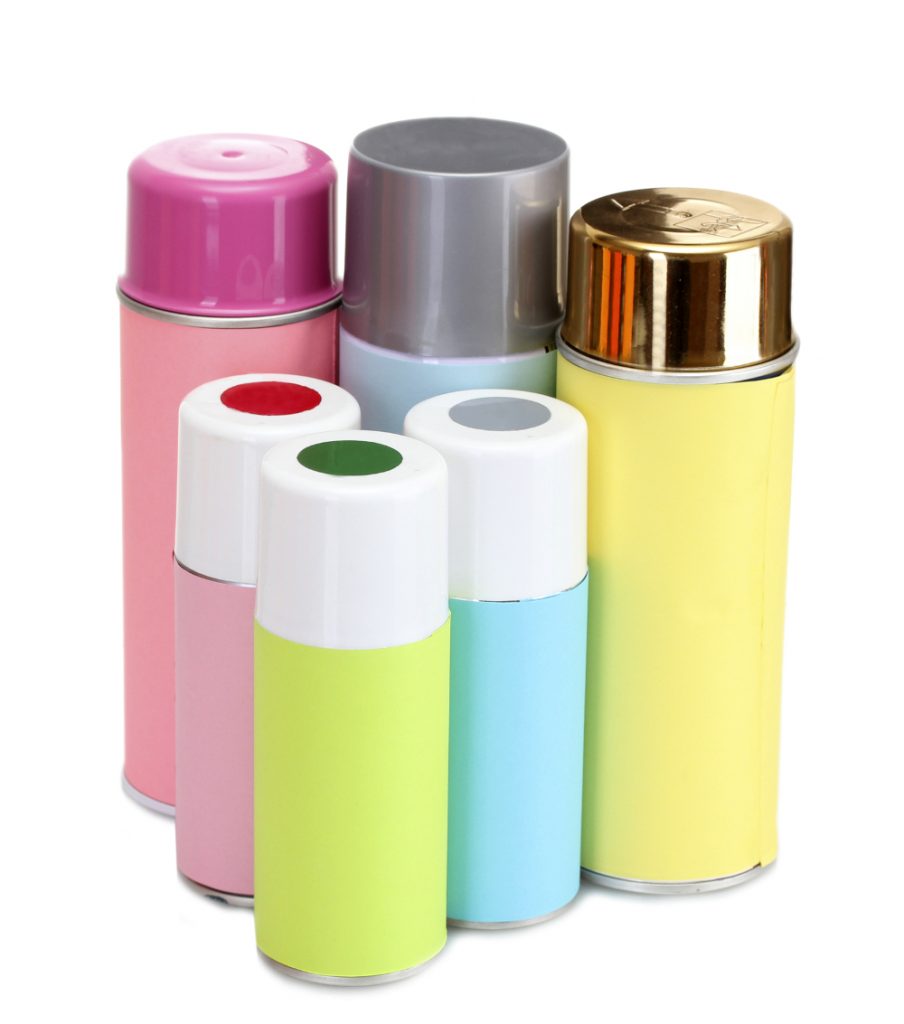The Aerosol Dispensers Directive 75/324/EEC, also called the ADD 75/324/EEC is one of Europe’s oldest Directives. Although it has never been replaced like, for instance, the Low Voltage Directive 73/23/EEC (replaced by the LVD 2006/95/EC and then the LVD 2014/35/EU) it has been revised / amended many times. Fortunately, the EU publishes the amended version here, and you will not need to refer to the separate amendments.

The ADD 75/324/EEC applies to aerosol dispensers as defined in Article 2 – any non-reusable glass, metal, or plastic container that contains gas under pressure with a release device so that the contents (liquid, powder, paste, or gas) can be ejected.
One caveat is that the container, to be within the scope of the ADD 75/324/EEC, must have a maximum capacity of equal to or greater than 50 ml. That means the ADD 75/324/EEC does not apply if the container is 49.9 ml or less.
Some requirements in the Directive apply to all aerosol dispensers in scope. For example: labeling specifications, storage considerations, inhalation risks, and construction requirements (for the valve). Next, it starts to get tricky. The ADD 75/324/ECC next lays out the requirements based on the nature of what is in the dispenser. They differ based on the below factors:
- Glass (differentiating between protected and non-protected glass), metal, plastic
- Non-flammable, flammable, extremely flammable
The material which the dispenser is made from is self-explanatory. The flammability, as pertains the ADD 75/324/EEC, is defined in the Annex (1.9):
For the purpose of this Directive, an aerosol is considered as ‘nonflammable’, ‘flammable’ or ‘extremely flammable’ according to its chemical heat of combustion and mass content of flammable components, as follows:
(a) The aerosol is classified as ‘extremely flammable’ if it contains 85 % or more flammable components and the chemical heat of combustion exceeds or is equal to 30 kJ/g;
(b) The aerosol is classified as ‘non-flammable’ if it contains 1 % or less flammable components and the chemical heat of combustion is less than 20 kJ/g;
(c) All other aerosols will be submitted to the following flammability classification procedures or shall be classified as ‘extremely flammable’. The ignition distance test, the enclosed space test and the foam flammability test shall comply with point 6.3.
Aerosol dispensers which contain flammable mixtures must then be subjected to testing, as indicated in the Directive, to determine if it is flammable or extremely flammable. Flammable and extremely flammable aerosol dispensers are not barred from the market on that basis, they are subject to more extreme labeling requirements than non-flammable products.

Lastly, I want to point out the Annex (6.1.4) Final inspection of filled aerosol dispensers tests indicated in the Annex (6.1.4.1.) (a), (b), and (c). See below –
6.1.4.1. Aerosol dispensers shall be subject to one of the following final test methods.
(a) Hot water bath test
Each filled aerosol dispenser shall be immersed in a hot water bath.
(i) The temperature of the water bath and the duration of the test shall be such that the internal pressure reaches that which would be exerted by its contents at a uniform temperature of 50 °C.
(ii) Any aerosol dispenser showing visible permanent distortion or a leak must be rejected.
(b) Hot final test methods
Other methods for heating the contents of aerosol dispensers may be used if they guarantee that the pressure and temperature in each filled aerosol dispenser reach the values required for the hot water bath test and distortions and leaks are detected with same precision as in the case of the hot water bath test.
(c) Cold final test methods
An alternative cold final test method may be used if it is in accordance with the provisions of an alternative method to the hot water bath test for aerosol dispensers specified in point 6.2.4.3.2.2 of Annex A to Directive 94/55/EC.
OK, “great!,” right…? Maybe. Next see the Annex 6.1.4.3 –
6.1.4.3. In case of test methods according to points 6.1.4.1(b) and 6.1.4.1(c):
The test method must be approved by a competent authority.
(b) The person responsible for the marketing of aerosol dispensers must submit an application for approval to a competent authority. The application must be accompanied by the technical file describing the method.
(c) The person responsible for the marketing of aerosol dispensers must, for surveillance purposes, keep the approval of the competent authority, the technical file describing the method and, if applicable, control reports readily available at the address specified on the label in accordance with point (a) of Article 8(1).
(d) The technical file must be established in an official Community language or a certified copy thereof must be available.
(e) ‘competent authority’ means the authority designated in each Member State under Directive 94/55/EC.
This means that if the final testing of the dispensers is not performed according to 6.1.4.1. (a) then a competent authority must be involved. That means two things for the manufacturer:
- More time
- More cost
This can be problematic if the manufacturer, for whatever reason, cannot raise the temperature to 50°C.
F2 Labs is here to help with your ADD 75/324/EEC project. Have a question or a comment? We can be contacted via this link. We can be reached by phone at 877-405-1580 and are here to help you.

